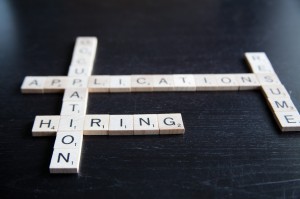How to Write a Resume
Part Two: Writing The Resume
Now that you have done the work to prepare for writing your resume it’s time to sit down and actually write it. Remember to keep in mind the goal of your resume is to get you the interview. Pause after each section and reread it slowly, will this pique the interest of this hiring director? Always gear your writing towards that specific job. You may wish to use a template to get the format or structure of your resume. This can be useful at least in the very beginning. Some templates will have unique layouts or colour, these may or may not be appropriate and you will have to use your judgment. Remember, always think about the job you are applying for. Once you have your resume you can tweak and change specific things to gear it towards each job you apply for. First things first, your information. Regardless of which format you choose, the first section should always be your information. In this section you want to include your name, address and most importantly anyway to reach you. Phone, email, fax or even skype. The point is you want to give them as many ways as possible to reach you. The resume maybe requested to be emailed in to apply, but the hiring director may phone to schedule interviews. You don’t know which method they would prefer to contact you, so make sure to give them all the options you have. On this note, I’d like to address the email address. Many people created their first email address when they were young and probably in high school or elementary school. But that email you created when you were 15? You know the one that’s I.Love.Justin.Timberlake@hotmail.com, yeah, not appropriate for a resume. Go ahead and create a new email, even if it is only for your job search. Generally look to make it firstname.lastname@host.com or firstname_lastname@host.com. You get the idea. The next section you may or may not see on a resume is the objective. This area is more of a choice section. Some resumes can be greatly helped by this section where as some resumes don’t require it. Use your judgment. In general this is the section where you spend one or maximum two sentences describing what your goals are. For some resumes it may be “To acquire part time weekend only work during the holiday season.” For another it may be “To acquire full time employment in the field of archeology and grow my career in the field.” You can see how these two would differ greatly, and that is why it can be helpful to have an objective. Again always look back at the company, job posting and hiring director for ideas of what you should write here to pique interest. The next 4 sections are skills, experience, education, and awards. You may see all four, you may see less or even more depending on the template you’re looking at. These are the main four, but the order you put them in, or even whether you use all four is completely up to you. I often will see skills listed at the end and awards not listen at all. Another section that I often see instead of awards is community involvement. This for many people can be more applicable than awards, and just as important to employers. I would recommend writing out each of these sections and arranging them after. You will see which sections are strongest and work best where once written. Experience and education are similar in writing. Name the employer or institution, how long you were there, the position you held/level of education received and location. After this you will want to give a short description of the job, any responsibilities or for education any awards or level of achievement. Remember to list any skills or responsibilities you feel will be valuable are the new job you are applying for. If you know the new job requires you to be able to operate a credit/debit machine and you did that at your previous job, list it. This will help make you a serious candidate amongst the other applicants. Skills, awards and community involvement tend to be areas people have more of a problem writing. They can feel uncomfortable “bragging” about themselves. This is where you go into the brag bank we worked on in last week’s blog. Look at the skills and achievements your friends and coworkers highlighted, are any of these applicable to this application? Which are your strongest? And don’t negate the small things, having a full G drivers licence and personal vehicle can be very important for some jobs. Having an AZ drivers license is a necessary skill for many others. And the community involvement is just as important to most employers. It helps them frame an idea around who this person on the paper really is. When your apart of your community it shows you care and that helps them feel confident about you as an applicant. Your resume is you on paper, and it can be difficult to express many things with its straight forward structure. This is where a cover letter comes into play. You should always send a cover letter along with your resumes. Find out why and how to write one in next week’s blog post! “How to Write a Resume: Part Three the Cover Letter”



Comments